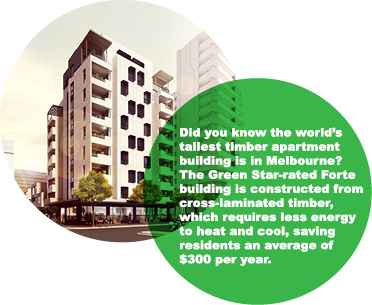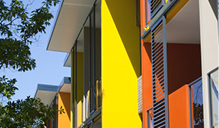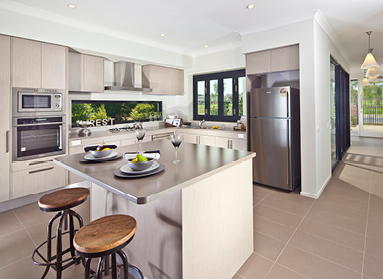Why live in a green building?

![]()
The benefits of a green home
The benefits of green building continue to stack up. There are a wide range of positive benefits for people living in green buildings including:
> A healthier home
> A smart investment
> Reduced environmental impact
Save moneyGreen homes put money in the pockets of home owners and tenants by saving on energy and water costs. |
|
|
 |
![]()
Healthier homesGreen homes are healthy homes. Good ventilation, low-toxic materials and abundant daylight are all factors proven to improve the health and wellbeing of residents. |
|
|
|
Smart Investment
Many buyers are beginning to see green buildings as a mark of quality when they hunt for a new property, and evidence is emerging that a green rating translates into a higher sale price when it comes time to sell.
- Energy Efficiency rating and house price in the ACT (2008) examined the relationship between energy efficiency and house prices, finding that each half-star increase in the energy efficiency rating translated into a 2% increase in capital value.
- Another broader American study, The Value of Green Labels (2012), involved a pricing analysis of 1.6 million single-family home sales in California from 2007-2012. The researchers found that, while the average sales price of a non-certified California home was $400,000, a green certification lifted the price by more than $34,800. This translated into a 9% green premium.
It is clear that sustainable buildings like Convesso represent smart financial investments today and environmentally responsible investments in our future.Executive Director, Lend Lease, Hugh Martin |
 |
| With a 4 Star Green Star rating, Convesso 8 Waterside Place in Melbourne uses 65% less heating and cooling energy than similar sized, non-green apartments. It’s also a smart investment. | ||
 |
 |
 |
Contact:
Rachael McGinley
Senior Manager - Strategy & Development
Green Building Council of Australia
Phone: 02 8239 6291
Email: rachael.mcginley@gbca.org.au
In this section
- Why design or build a green commercial building?
- Why design or build a green residential building?
- Why design or build a green school?
- Why design or build a green hospital?
- Why design or build a green public building?
- Why own a green commercial building?
- Why own a green residential building?
- Why own a green school?
- Why own a green hospital?
- Why own a green public building?




